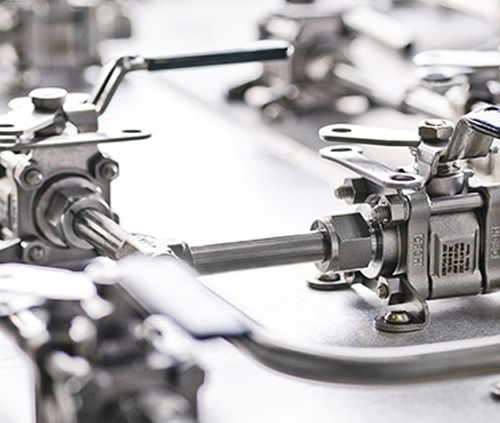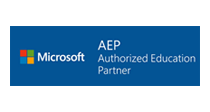Engineering and Instrumentation
Fluid Power Systems: Hydraulics and Pneumatics
Why Attend
Fluid power systems (hydraulics and pneumatics) offer an alternate means of controlling industrial systems without a large number of electrical components. Forces can be quickly transmitted over considerable distances efficiently with little loss and large components can be controlled with very small forces, and with smooth, uniform action.
This course provides participants with the knowledge to construct and operate all the individual components essential for the optimum operation of the overall fluid power system. It includes the supply of fluid (gas or liquid), the use of fluid powered control cylinders, control valves and motors as well as the tools associated with the maintenance and repair of fluid power systems.
Course Methodology
This course is highly interactive and includes group discussions, case studies and syndicate work. It also includes practical exercises that allow all participants to use the knowledge they gained to implement their skills in operating fluid power systems.
Course Objectives
By the end of the course, participants will be able to:- Describe the development and applications of modern fluid power systems (hydraulics and pneumatics) including the different types of fluids and the three general classes of piping
- Apply Pascal's law to the design and operation of fluid power systems and circuits
- Outline the types of seals and components in fluid power systems and their respective benefits
- Operate a fluid power system circuit, given a system schematic
- Prevent, identify and troubleshoot common failures of fluid power systems
Target Audience
This course is designed for professionals involved with, and responsible for, the operation of fluid power systems including maintenance managers, maintenance supervisors, engineers, project managers, technicians and plant operators.
Target Competencies
- Fluid power circuit design and operation
- Fluid power systems maintenance and repair
- Fluid power systems troubleshooting
- Pneumatic components operation
- Hydraulic components operation
Note

Course Outline
- Pneumatic theory
- Advantages of fluid power
- Transmission of forces through fluids
- Pascal's law
- Force and pressure
- Computing force, pressure and area
- Multiplication of forces
- Differential areas
- Compressibility and expansion of gases (Boyle's law/ Charles's law)
- Work and energy
- Fluid flow
- Volume and velocity of flow
- Steady and unsteady flow
- Streamline and turbulent flow
- Factors involved in flow
- Relationship of force, pressure, and head
- Static and dynamic factors
- Bernoulli's principle
- Minimizing friction
- Advantages of pneumatics
- Pneumatic applications and symbols
- Advantages of fluid power
- Pneumatic components
- Purification equipment
- Preliminary filtering - dry-type/wet-type filters
- Moisture removal and drying
- Additional filtering
- Filtering contaminants
- Filter classes and ratings
- Surface/depth filters
- Lubrication of heavy/fine lubricators
- Pneumatic cylinders
- Single-acting/ Double-acting cylinders
- Two-piston cylinder
- Cushioning devices
- Pneumatic control valves
- Control valve elements
- Two/three/four/five-way valves
- Manually operated valves
- Pilot and solenoid valves
- Air receivers
- Pneumatic motors
- Motor classification
- Pneumatic motor construction
- Pneumatic tools
- Purification equipment
- Pneumatic circuits
- Basic pneumatic system
- Simple circuits
- Timing circuits
- Safety circuits
- Pneumatic circuits
- Determining causes of failures
- Understanding the system
- Troubleshooting procedures
- Checking air supply systems
- Troubleshooting the actuator
- Checking the control valve
- Checking a control valve actuator
- Checking sequence valves
- Checking master control valves
- Making final adjustments
- Pneumatic system troubleshooting chart
- Hydraulic theory
- Hydraulic development
- Hydraulic applications
- Advantages of hydraulics
- Physics of hydraulics
- Hydraulics' pressure
- Pascal's law
- Fluid flow
- Hydraulic symbols
- Hydraulic development
- Hydraulic components
- Hydraulic liquids
- Hydraulics' properties
- Viscosity and viscosity index
- Lubricating power
- Types of hydraulic liquids (water/petroleum/synthetic)
- Hydraulics' properties
- Piping and connectors
- Rigid pipe
- Semi-rigid (tubing)
- Flared connectors
- Bite-type connectors
- Sealing devices
- Materials (synthetic rubber/cork/metal)
- Types of seals
- Wipers and backup washers
- Hydraulic reservoirs
- Accumulators
- Weight-loaded type
- Spring-loaded type
- Air or gas-type
- Hydraulic pumps
- Rotary pumps
- Reciprocating pumps
- Control valves
- Directional control valves
- Flow control valves
- Solenoid operated valves
- Cylinders/actuators
- Ram-type cylinders
- Piston-type cylinders
- Hydraulic liquids
- Hydraulic circuits
- Basic hydraulic system
- Hydraulic circuits
- Common causes of failure
- Dirt
- Heat
- Misapplication
- Improper fluids
- Maintenance
- Improper design or installation
REQUEST CALL BACK
Would you like to speak to one of our consulting advisers over the phone? Just submit your details and we’ll be in touch shortly.














